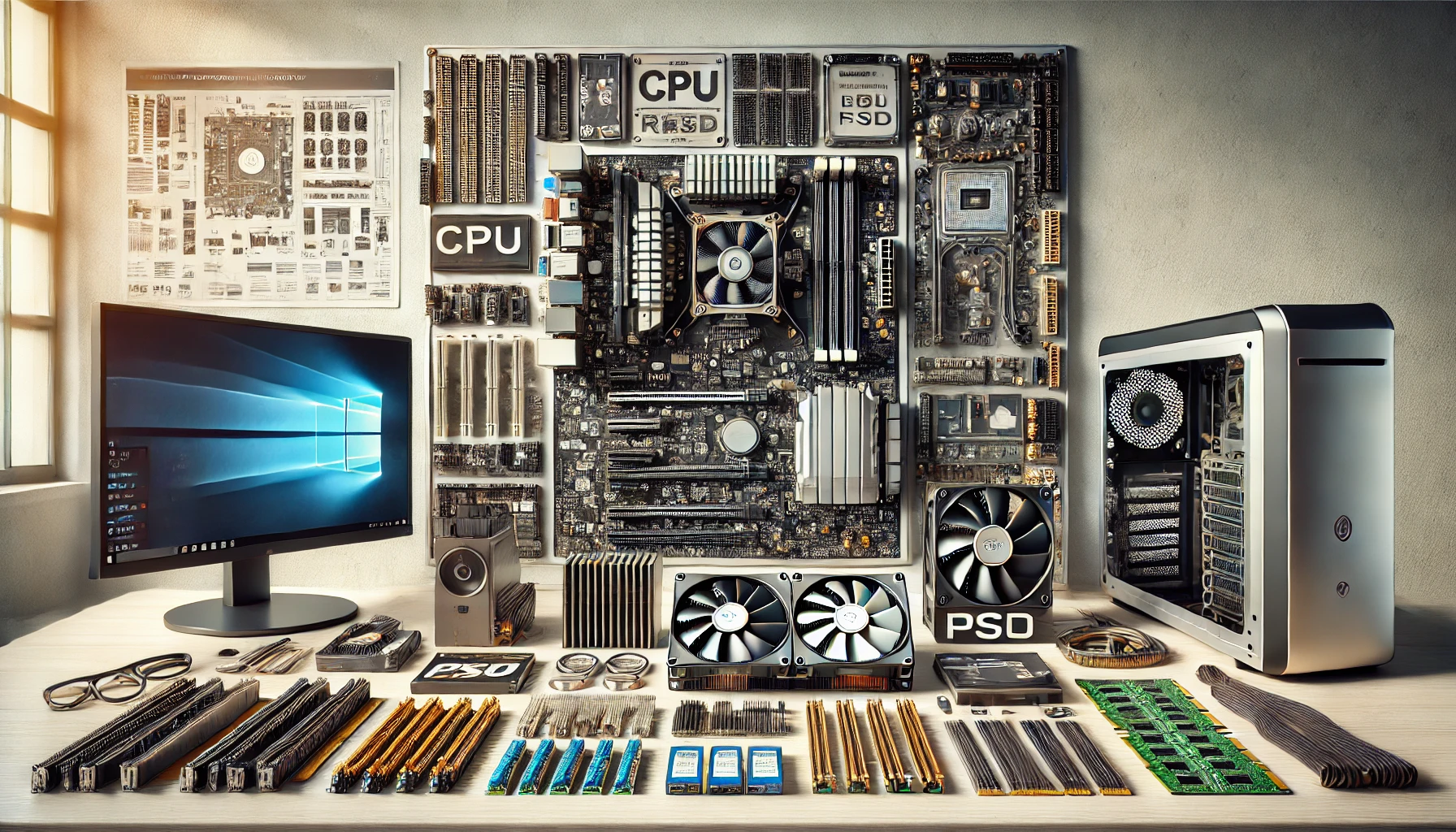If you’re thinking about building a PC, one of the first questions that comes to mind is: What do I actually need to build a working computer? Whether your goal is gaming, video editing, streaming, or simply browsing the internet, certain components are essential to get your system up and running.
This article will guide you through the core hardware every PC needs, explain the purpose of each part, and help you understand how they work together.
Why It’s Important to Know Your PC Parts
Knowing your components allows you to:
- Make informed purchase decisions
- Ensure compatibility between parts
- Avoid overspending
- Build a system that suits your specific needs
Now let’s explore the parts that make up a complete computer.
1. CPU (Central Processing Unit)
What it is:
The CPU is the brain of your computer. It processes instructions and handles all the basic operations.
Key considerations:
- Brand: Intel or AMD
- Performance: Clock speed (GHz), number of cores/threads
- Socket type: Must match the motherboard (e.g., AM5, LGA1700)
Popular CPUs in 2025:
- Intel Core i7-14700K
- AMD Ryzen 7 7800X3D
2. Motherboard (Mainboard)
What it is:
The motherboard connects all your components. It routes power, data, and communication between parts.
Key considerations:
- Socket compatibility with your CPU
- RAM support (DDR4, DDR5)
- Expansion slots (PCIe for GPUs, M.2 for SSDs)
- Form factor (ATX, Micro-ATX, Mini-ITX)
A high-quality motherboard improves stability and upgrade potential.
3. RAM (Random Access Memory)
What it is:
RAM is your system’s short-term memory. It stores data temporarily for quick access while your PC is running.
Key considerations:
- Capacity: 16GB is standard; 32GB+ for demanding tasks
- Speed: Measured in MHz (e.g., 3200MHz, 6000MHz)
- Type: DDR4 or DDR5 depending on the motherboard
More RAM = smoother multitasking and better performance in modern apps.
4. Storage (SSD/HDD)
What it is:
Storage is where your files, applications, and operating system live.
Options:
- SSD (Solid State Drive): Fast, silent, reliable. Ideal for OS and apps.
- HDD (Hard Disk Drive): Slower but cheaper and available in large capacities. Great for media storage.
Recommended:
- 500GB to 1TB SSD for your system drive
- Optional HDD for additional bulk storage
5. GPU (Graphics Processing Unit)
What it is:
The GPU handles rendering images, videos, and 3D environments—crucial for gaming, editing, and rendering.
Options:
- Integrated GPU: Built into some CPUs (e.g., Intel i5 with UHD Graphics)
- Dedicated GPU: Separate component like NVIDIA RTX 4070 or AMD RX 7800 XT
Gaming and creative work benefit hugely from a powerful dedicated GPU.
6. Power Supply Unit (PSU)
What it is:
The PSU converts AC electricity from the wall into DC power for your components.
Key considerations:
- Wattage: Common builds need 550W–850W
- Efficiency rating: Look for 80+ Bronze, Gold, or Platinum
- Modular or semi-modular: Easier cable management
A quality PSU protects your system from power surges and failures.
7. PC Case (Chassis)
What it is:
The case houses and protects all your components. It also helps with airflow and cable management.
Key considerations:
- Size: ATX (standard), Micro-ATX, or Mini-ITX
- Airflow: Look for mesh fronts and fan support
- Features: Tempered glass side panels, RGB lighting, USB ports
Choose a case that fits your parts and your style.
8. Cooling System
What it is:
Keeps your components cool to maintain performance and avoid damage.
Types:
- Air Cooling: Budget-friendly and effective
- Liquid Cooling: Quieter and more efficient, especially for overclocking
Most CPUs come with a stock cooler, but aftermarket coolers improve performance.
9. Operating System (OS)
What it is:
Software that manages your hardware and allows you to use applications.
Popular options:
- Windows 11: Great for gaming and general use
- Linux: Free and open-source, used by developers and tech-savvy users
Install the OS via USB after assembling your PC.
10. Optional But Important Peripherals
Although not required for the PC to function internally, you’ll need these to actually use it:
- Monitor
- Keyboard & Mouse
- Speakers or Headset
- Webcam (for video calls)
- Wi-Fi adapter or Ethernet cable
Some motherboards come with built-in Wi-Fi and Bluetooth, while others may require add-ons.
Compatibility Matters
Before buying anything, make sure all parts are compatible. Here’s what to look for:
- CPU ↔ Motherboard: Match the socket
- Motherboard ↔ RAM: Check type and speed support
- PSU ↔ GPU/CPU: Enough wattage and correct power connectors
- Case ↔ GPU/Motherboard: Enough space for all components
Use online tools like PCPartPicker.com to double-check compatibility and avoid mistakes.
Final Thoughts: Building Starts Here
Understanding the essential components is the first step toward building your dream PC. Each part has a specific role, and choosing them wisely ensures you get the performance, stability, and upgrade potential you need.
